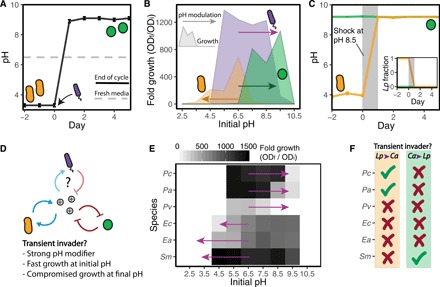Fig. 2. Feedback loops between microbial growth and pH can determine the community impact of transient invaders.

(A) Observed shift in pH after a Pc invasion into the stable state governed by Lp. The solid line stands for the pH at the end of each daily cycle. During each cycle, microbes induce changes in the pH of the fresh medium (dashed line) in which they were diluted into. (B) pH range in which Lp (in orange), Pc (purple), and Ca (green) exhibit growth, indicated by the fold growth in OD after monocultures spent 24 hours in highly (100 mM phosphate) buffered media. Arrows indicate how each species modifies the pH in standard (10 mM phosphate) buffer conditions. The head of the arrow points toward the pH value reached after a 24-hour culture that started at pH 6.5. (C) A temporary shock in which cells were transferred to alkaline medium during a single daily cycle (gray area) induced a transition from the Lp state to the Ca state (orange), while cocultures in the Ca state (green) remained unaltered. (D) Three main features observed in species that can act as transient invaders, as predicted by a minimal model that considers feedbacks between microbial growth and pH. (E) Fold growth in highly buffered media for monocultures from six different species, and pH modification induced by those species in standard buffer conditions (arrows). (F) Ticks and crosses indicate which species acted as transient invaders inducing community switches: Pa and Pc induced switches toward the alkaline state, and Sm was able to cause a switch toward the acidic state. Data in (B) and (D) correspond to average from four replicates (fold growth SE ≤ 2, pH modification SE ≤ 0.1).
